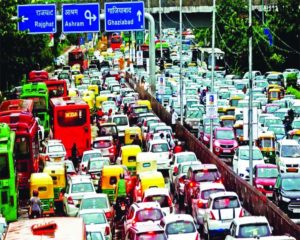Harness the Power of Sun
By: Dr K K Paul
Recently, while addressing the UN Climate Action Summit 2019 in the US, Prime Minister Narendra Modi said, “We believe that an ounce of action is worth more than a tonne of preaching” and announced that India had ambitious plans to harness solar energy. A target of installing 175 gigawatt (GW) of renewable energy by 2022 has been set, which may further increase to 450 GW by 2030. The Government had an initial target of 20 GW of solar capacity by 2022, which was achieved four years ahead of schedule. Encouraged by this performance, the target was revised in 2015 to 100 GW, which has now been further raised, as the Prime Minister informed in his address.
To meet this goal, a series of solar power projects such as the Solar Parks and Ultra Mega Solar Power Projects, Canal Solar Power Project and the installation of 1,00,000 solar pumps for farmers are at different stages of implementation. Solarisation of nearly 50,000 petrol stations across the country is also being promoted. Over 3,000 fuel stations are already solar-powered. Considering that India is the fourth-largest emitter of carbon dioxide in the world, solar energy appears to be a very convenient alternative.
India is lucky that sunlight is available in abundance but the challenge lies in the procurement of solar Photo Voltaic (PV) cells, which is one of the major constraining factors in our efforts to realise the full potential. According to a report submitted by the parliamentary standing committee, in order to achieve the target of 100 GW of solar electricity capacity by 2022, India should have had an installed capacity of 32,000 megawatt (MW) by 2017-18. But as of January 31, 2018, the country only had a capacity of 18,455 MW. As per the standing committee, the Ministry of New and Renewable Energy has to install the remaining 81,545 MW in just four years — this is over 20,000 MW a year and appears difficult to achieve.
A serious lacuna in the entire exercise is our poor record in indigenous manufacturing of solar panels. Today China is the only country that caters to most of the global PV cell demands. It produces the cheapest solar panels. It is difficult for any country to match such low prices. This has led to a situation where China has a virtual monopoly and this may not be desirable in the long run. Our own imports, mostly from China, accounted for 90 per cent of 2017 sales, up from 86 per cent in 2014. Thus, it is paradoxical that both our sources of energy and oil as well as solar are currently heavily dependent on imports.
The world’s annual solar capacity reached close to 500 GW last year, which may go up to 3,000/5,000 GW by 2030, a ten-fold increase. In the next 30 years, this demand is likely to increase by hundred times and the major beneficiary will be China.
Strategically, it will not be logical for India to continue nourishing the Chinese monopoly as it would introduce serious imbalances in the global situation. This calls for the need to prioritise the expansion and investment in the manufacture of PV cell industry. In the near future, hydrocarbon resources are going to be scarce and, hence, the emphasis on electric vehicles (EVs). They can be charged directly using PV cells. This will not only bring down the carbon dioxide emission levels but also reduce our dependence on fossil fuels.
To actualise such a situation, we must start investing in lithium ion batteries. Here, too, the Chinese have an upper hand and, hence, the need to look for alternatives. Lithium ion batteries being compatible with PV cells, once they lose their efficiency in cars, can be reused for domestic solar battery applications.
In the years to come, demand for solar panels is bound to see a dramatic rise. Land availability for the establishment of solar plants in a densely populated country like India can become a major issue. It has been estimated that the setting up of a 1 MW power solar plant requires two to three hectares of land. In case the solar panels are thin-film based, requirement of land can go up to four to five hectares. As for the first case, wastelands or land that is not available for cultivation can be used for the setting up of solar parks.
In order to improve efficiency of solar panels in these parks, directional limitations in the existing design have suitably been addressed by devising a tracking system. A solar tracker is a device that is used to orient the panel towards the sun. For flat panel PV systems, a solar tracker ensures that the sun’s rays fall at the correct angle of incidence. A solar tracker fitted PV panel can show considerable improvement in its efficiency.
A dual axis tracker rotates on two axis and follows the sun vertically as well as horizontally so that the panel gets the best incidence of sun rays, thus increasing its efficiency by about 20 per cent. Nevertheless, in areas where land is available like Rajasthan, dust is a major problem, which over a period of time, tends to erode the efficiency of the solar panels.
But all is not lost as we may not have to put all our eggs in the Chinese basket. For direct generation of electricity, the solar thermal route can also be explored. An array of parabolic mirrors helps put the focus of the sunlight at the right place to produce sufficient heat, which raises steam and can be used to run a turbine, thus generate power.
Currently, this technology is being used in the US (California), Israel, Spain and Germany. In India, two plants are already operational in Rajasthan and six others are under construction, all in the private sector. The model experimental plant to harness solar energy through the thermal route was inaugurated just outside Delhi in January this year and is running up to 50 per cent efficiency. The development of indigenous solar manufacturing facilities is important to harness solar energy. This needs attention and on priority.
(The writer is a former Governor of Uttarakhand and a Senior Advisor at the Pranab Mukherjee Foundation)





